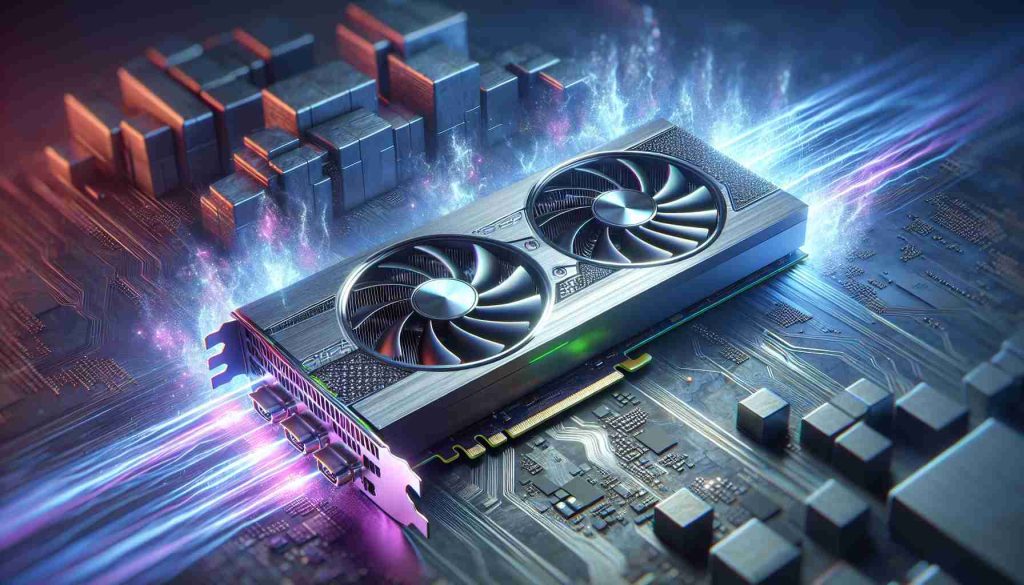Intel has made a bold move in the competitive GPU market by announcing its new desktop graphics cards: the Arc B580 and Arc B570. With attractive pricing, impressive specifications, and enhanced performance capabilities, these GPUs aim to rival Nvidia and AMD’s dominance in the graphics card segment. Let’s dive deep into what makes these new GPUs stand out and how they stack up against their competitors.

Intel Arc B580 and B570: A New Era in Budget-Friendly GPUs
Intel’s Arc B580 and B570 graphics cards are designed to provide high-performance gaming and creative workloads without breaking the bank. Priced at $249 and $219, respectively, these GPUs aim to disrupt the mid-range segment of the market. The Arc B580 will be available starting December 13, while the Arc B570 will hit shelves on January 16.
Innovative Xe2 “Battlemage” Architecture
At the core of the B580 and B570 lies Intel’s latest Xe2 “Battlemage” architecture, also used in the company’s Lunar Lake laptop chips. This architecture offers substantial improvements over previous generations, including better power efficiency, increased graphics core count, and enhanced memory management.
Key Specifications of Arc B580
- Graphics Cores: More than double compared to laptop variants.
- Video Memory: Up to 12GB of GDDR6 dedicated memory.
- Power Consumption: Maximum of 190W.
These specs make the B580 particularly appealing for gamers and creators who need robust performance at a reasonable cost.
Performance Comparisons: Taking on Nvidia and AMD
Intel claims that the Arc B580 can compete directly with Nvidia’s RTX 4060 and AMD’s RX 7600 in terms of performance. According to Intel’s internal benchmarks:
- Cyberpunk 2077: Achieves 60fps on 1440p ultra settings with the Core i9-14900K CPU.
- The Witcher 3: Similar results as above, showcasing smooth gameplay.
- Forza Motorsport: Outpaces Nvidia when ray tracing is enabled (64fps vs. 57fps).
However, Nvidia’s RTX 4060 outperforms the B580 in titles like Starfield and Gears 5. This indicates that the B580’s performance advantage may be situational, depending on the game and graphical settings.
Arc B570: A Budget-Friendly Alternative
While Intel has not shared detailed benchmarks for the Arc B570, it is expected to offer slightly lower performance than the B580 while maintaining excellent value for its price.
Features That Set Intel GPUs Apart
Intel is not only competing on pricing but also introducing innovative features to distinguish its GPUs from Nvidia and AMD.
XeSS Technology: A Game-Changer
Intel’s XeSS (Xe Super Sampling) technology is a direct competitor to Nvidia’s DLSS and AMD’s FSR.
- Frame Generation: XeSS introduces frame generation capabilities to boost frame rates.
- Low Latency Mode: Reduces latency issues associated with frame interpolation, enhancing gameplay responsiveness.
Enhanced Memory for Demanding Tasks
The Arc B580’s 12GB of video memory gives it an edge in memory-intensive scenarios, such as:
- High-resolution gaming.
- Advanced ray tracing effects.
- Creative tasks like video editing and 3D rendering.
Product Variants: Options for Every User
Intel will release a Limited Edition Arc B580 model with dual fans and a single 8-pin power connector. Additionally, third-party manufacturers such as Acer and ASRock are developing their own versions of these cards, providing consumers with diverse options in terms of cooling solutions and design.
Challenges and Market Dynamics
Despite its strong offerings, Intel faces significant challenges in the GPU market:
- Competitive Pricing Pressure: Nvidia and AMD may adjust their prices to maintain their market share.
- Uncertainty About Future Investments: Intel’s commitment to the discrete GPU market has been questioned, with CEO Pat Gelsinger previously hinting at potential cuts.
Future Outlook for Intel Graphics Cards
Intel’s roadmap includes continuous improvements to its GPU lineup. The company is focusing on:
- Integrating XeSS 2 into major upcoming titles like F1 24 and Assassin’s Creed Shadows.
- Expanding partnerships with game developers for better optimization.
While Intel’s long-term presence in the GPU market remains uncertain, the Arc B580 and B570 are promising additions that could reshape consumer expectations in the mid-range segment.
FAQs About Intel Arc B580 and B570 Graphics Cards
1. How do the Intel Arc B580 and B570 compare to Nvidia and AMD GPUs?
The Arc B580 competes with Nvidia’s RTX 4060 and AMD’s RX 7600, offering similar or better performance in specific scenarios like ray tracing and memory-intensive tasks. The Arc B570 is a more affordable option, ideal for budget-conscious users.
2. What is XeSS technology, and how does it benefit gamers?
XeSS (Xe Super Sampling) is Intel’s AI-driven upscaling technology that improves frame rates by generating additional frames. It also features a Low Latency mode for smooth and responsive gameplay.
3. When will the Intel Arc B580 and B570 be available?
The Arc B580 will launch on December 13, 2024, while the Arc B570 will be available starting January 16, 2025.
4. What are the key features of the Arc B580?
The Arc B580 features more than double the graphics cores compared to laptop variants, 12GB of video memory, and a power consumption of up to 190W, making it ideal for gaming and creative workloads.
5. Will third-party manufacturers produce versions of these GPUs?
Yes, manufacturers like Acer and ASRock are producing their versions of the Arc B580 and B570, offering various cooling and design options.




